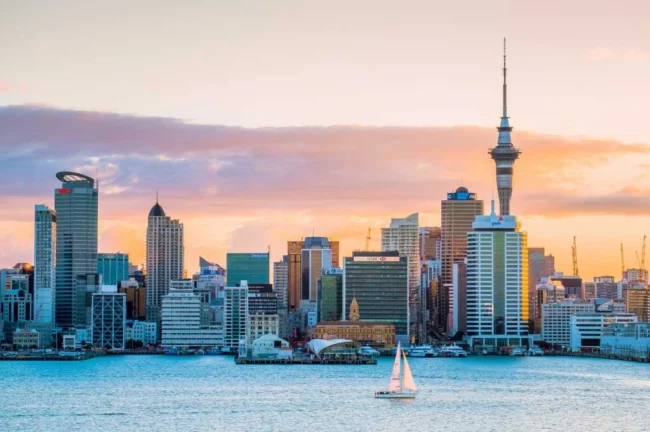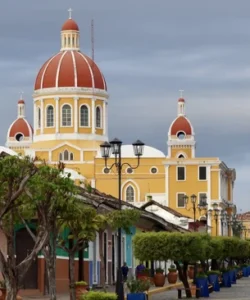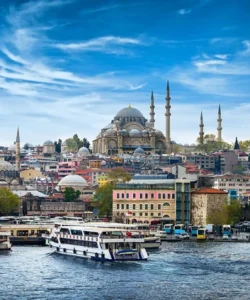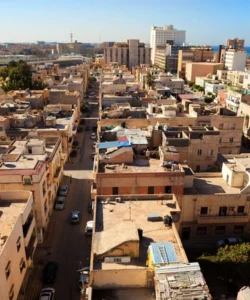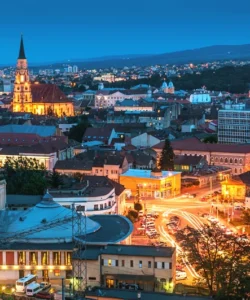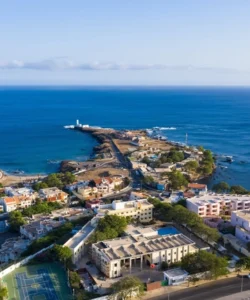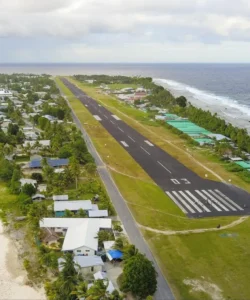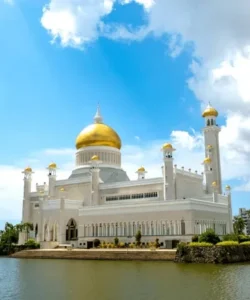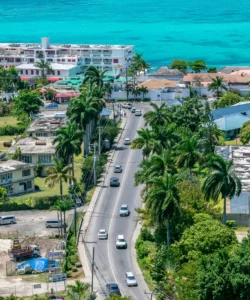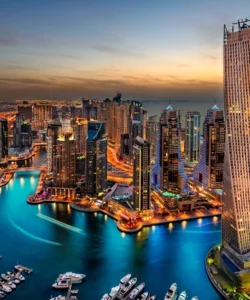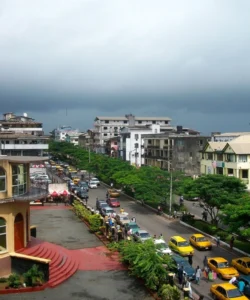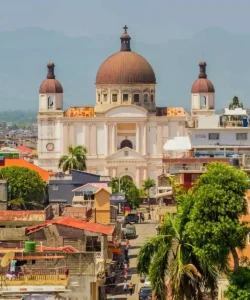New Zealand is an island country in the southwestern Pacific Ocean, known for its breathtaking natural beauty, from majestic fjords and active volcanoes to vast plains and golden beaches. It’s also celebrated for its vibrant Māori culture and its status as an adventure tourism hub.
Here’s a comprehensive overview:
- Area: Approximately 268,021 km² (103,483 sq mi). It consists of two main landmasses, the North Island and the South Island, and numerous smaller islands.
- Population: Estimated at around 5,431,894 people as of July 2025.
- Language: The official languages are English, Māori (Te Reo Māori), and New Zealand Sign Language. English is the most commonly spoken.
- Currency: New Zealand Dollar (NZD).
- Religion: Predominantly Christian, with a significant proportion identifying as having no religion. Māori traditional beliefs (Tūhoe and Rātana) are also practiced.
- Capital: Wellington.
- Major Cities/Towns: Auckland (largest city), Wellington, Christchurch, Hamilton, Tauranga, Dunedin, Queenstown, Rotorua.
Attractions & Wonders:
New Zealand’s stunning and diverse landscapes are its primary draw, offering a wide range of activities.
- Natural Wonders:
- Fiordland National Park (South Island): Home to Milford Sound and Doubtful Sound, iconic fjords with towering cliffs, waterfalls, and unique wildlife. A UNESCO World Heritage Site.
- Tongariro National Park (North Island): Features three active volcanoes (Tongariro, Ngauruhoe, Ruapehu) and is famous for the Tongariro Alpine Crossing, one of the world’s best day hikes. A UNESCO World Heritage Site.
- Southern Alps (South Island): A mountain range running the length of the South Island, home to Aoraki/Mount Cook (New Zealand’s highest peak), glaciers (Franz Josef and Fox), and stunning alpine scenery.
- Rotorua (North Island): Known for its geothermal activity, including geysers, bubbling mud pools, and hot springs, as well as significant Māori cultural experiences.
- Bay of Islands (North Island): A subtropical paradise with over 144 islands, popular for sailing, fishing, and exploring historical sites like the Treaty Grounds at Waitangi.
- Abel Tasman National Park (South Island): Golden sandy beaches, turquoise waters, and lush coastal forests, perfect for kayaking, hiking, and cruising.
- Waitomo Glowworm Caves (North Island): A fascinating underground world illuminated by thousands of glowworms.
- Punakaiki Pancake Rocks and Blowholes (South Island): Unique limestone formations eroded by the sea.
- Man-Made Attractions & City Highlights:
- Sky Tower (Auckland, North Island): The tallest freestanding structure in the Southern Hemisphere, offering panoramic views, a casino, and thrilling activities like SkyJump and SkyWalk.
- Te Papa Tongarewa (Wellington, North Island): New Zealand’s national museum, a vibrant and engaging museum showcasing Māori culture, natural history, and art.
- Queenstown (South Island): The “Adventure Capital of the World,” offering bungee jumping, jet boating, skydiving, whitewater rafting, and skiing in winter.
- Hobbiton Movie Set (Matamata, North Island): A popular attraction for fans of “The Lord of the Rings” and “The Hobbit” films.
- Christchurch Botanic Gardens (South Island): Beautiful and expansive gardens in the “Garden City.”
- Napier (North Island): Known for its distinctive Art Deco architecture, rebuilt after an earthquake in 1931.
Architecture:
New Zealand’s architecture blends its Indigenous Māori heritage, British colonial influences, and a modern approach to design that often connects with the natural environment.
- Māori Architecture (Whare, Marae): Traditional Māori buildings, such as whare (houses) and marae (communal meeting grounds), are richly adorned with intricate carvings (whakairo) and woven panels (tukutuku), reflecting spiritual beliefs and ancestral stories. These are living cultural spaces.
- Colonial Architecture: Victorian and Edwardian styles are evident in many historic city buildings, particularly in Wellington and Dunedin, showcasing ornate details, timber construction, and brickwork.
- Bungalows and Villas: Early 20th-century residential styles, adapted from British and American designs, are common in older suburbs.
- Art Deco (Napier): A unique concentration of Art Deco buildings, rebuilt in the style of the 1930s after a devastating earthquake.
- Modern and Contemporary: New Zealand architects are known for innovative, often sustainable designs that emphasize natural materials, open spaces, and integrate with the landscape, particularly in residential homes and eco-tourism lodges.
Roads:
New Zealand has a well-maintained road network, though many roads, especially in scenic areas, can be narrow, winding, and hilly.
- State Highways: Connect major towns and cities and are generally of good quality.
- Rural Roads: Outside of main routes, roads can be less direct, and gravel roads are common in some remote areas.
- Driving Conditions: New Zealanders drive on the left side of the road. Be prepared for varying conditions, including sharp bends, narrow bridges, and potentially long driving times due to the winding nature of the roads, even over relatively short distances. Always factor in extra time for photo stops!
- One-Lane Bridges: Common in some rural areas; adhere to signs for right-of-way.
- Wildlife: While less common than in Australia, care should be taken for wandering livestock (sheep!) and occasional native birds.
Hotels:
New Zealand offers a diverse range of accommodations to suit all budgets and styles, from luxury lodges to budget-friendly hostels and unique stays.
- Luxury Lodges: Renowned for their stunning locations, impeccable service, and fine dining (e.g., Blanket Bay near Queenstown, The Farm at Cape Kidnappers).
- International Chains: Major hotel brands (e.g., Hilton, Sofitel, Grand Millennium) are present in larger cities.
- Boutique Hotels: Charming and unique hotels in urban centers and popular tourist towns.
- Motels: Abundant and a popular choice for self-drivers, often offering kitchenettes and good value.
- Holiday Parks/Campgrounds: Excellent facilities for campers, campervans, and cabins, often in scenic locations.
- Backpacker Hostels: High-quality hostels providing affordable accommodation.
- Farm Stays: Opportunities to experience rural life on working farms.
Restaurants:
New Zealand’s culinary scene is vibrant and growing, emphasizing fresh, seasonal, and locally sourced ingredients, with a strong focus on seafood and lamb.
- Fine Dining: Major cities like Auckland and Wellington offer award-winning restaurants showcasing innovative Pacific Rim and Modern New Zealand cuisine.
- Café Culture: Strong, particularly in Wellington, known for excellent coffee and creative brunch menus.
- Casual Dining: Pubs (gastropubs with quality food), ethnic restaurants (Asian, Indian, European), and local takeaways (fish & chips).
- Farmers Markets: Excellent for sampling local produce, artisan foods, and gourmet treats.
- Vineyard Restaurants: In wine regions like Marlborough and Hawke’s Bay, many wineries offer exceptional restaurants.
Cuisine:
New Zealand cuisine is influenced by its British heritage, Māori traditions, and diverse immigration, with a strong emphasis on fresh, high-quality ingredients.
- Lamb: World-renowned for its quality, lamb is a staple, often roasted or grilled.
- Seafood: Abundant and fresh, including green-lipped mussels, oysters (especially Bluff oysters), crayfish (lobster), pāua (abalone), and various fresh fish like snapper and hapuka.
- Hāngī: A traditional Māori method of cooking food (meat and vegetables) in a pit oven using heated rocks, resulting in a smoky, earthy flavor. Often part of cultural performances.
- Pavlova: A popular meringue-based dessert, crispy on the outside and soft inside, topped with whipped cream and fresh fruit (claimed by both NZ and Australia).
- Fish and Chips: A beloved takeaway, especially popular by the beach.
- Kiwifruit: The national fruit, grown widely.
- Kumara: A sweet potato, a staple in Māori cuisine.
- Meat Pie: Similar to Australia’s, a savory pastry with various fillings, a common snack.
- Flat White: A popular coffee drink, creamy and strong.
- Craft Beer and Wine: New Zealand has a booming craft beer scene and is internationally acclaimed for its wines, especially Sauvignon Blanc from Marlborough and Pinot Noir from Central Otago.
